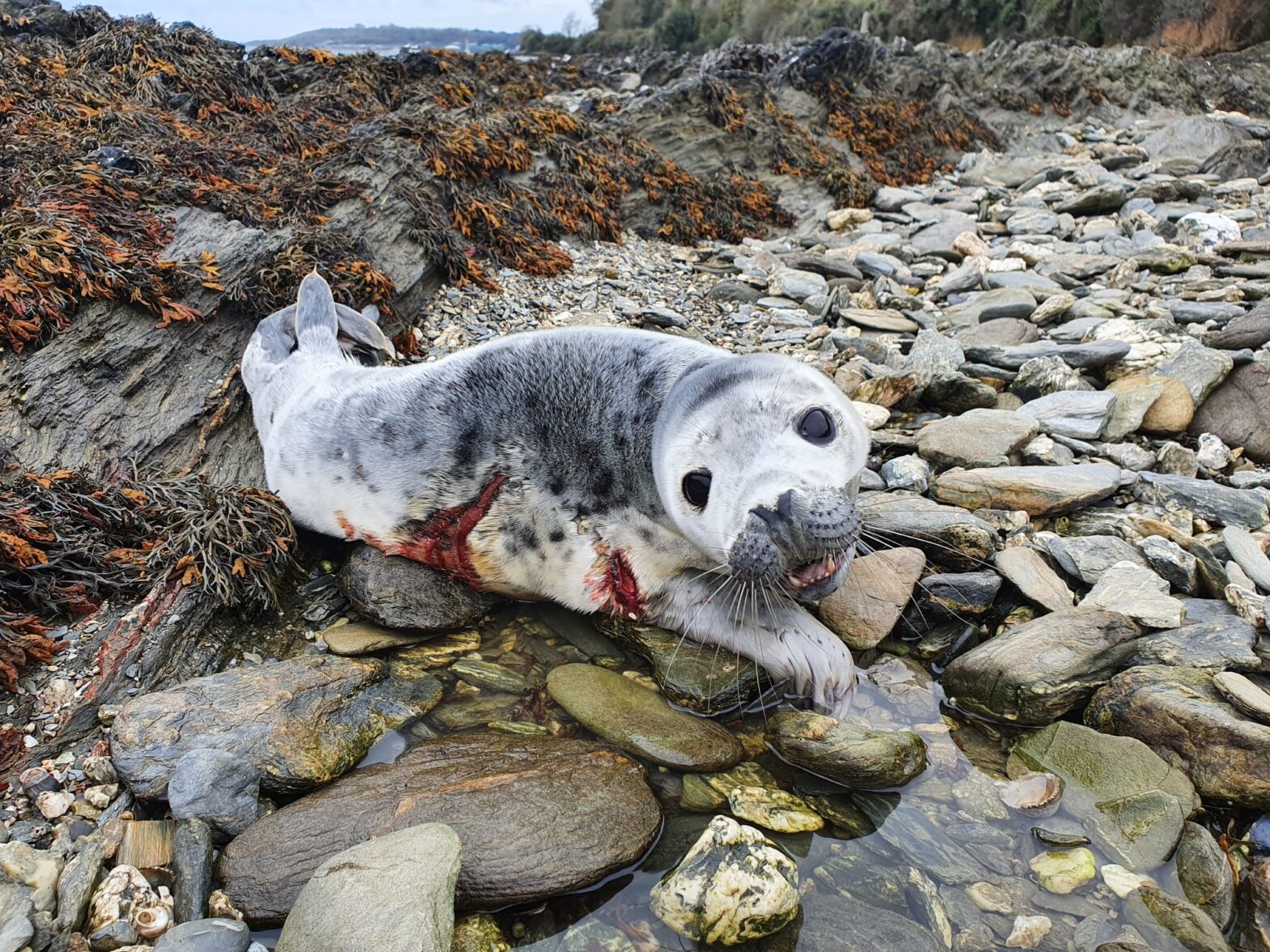Climate change: a serious problem for breeding seals in Europe
At the recent 35th Annual Conference of the European Cetacean Society, OceanCare, together with colleagues from British Divers Marine Life Rescue (BDMLR), made a presentation about how climate change can impact seal welfare especially during the breeding season. The presentation highlighted the challenges that this brings to the marine mammal rescue community.
Vulnerability of seal pups in the first weeks of life
Grey seal and harbour seal pups stay with their mothers for the first few weeks of their lives. During this time they rely entirely on their mother’s rich milk so that they can grow and gain sufficient fat reserves to eventually go to sea on their own. If a pup which is still dependent on its mother’s milk becomes separated from her during a storm, it may starve to death or not have enough fat stores to survive. Even after a seal pup has been weaned, it is still vulnerable. When its mother has left it to fend for itself, the pup will stay on the beach for a number of days or weeks before heading out to sea. Pups cannot swim very well at this time and they are at risk if there is a storm or sea levels rise quickly.
Horrific injuries seen after storms
When a storm hits, seal pups can be washed away from the shore and drown at sea. Sometimes they may be dashed against rocks by the waves, which can cause serious injuries such as open wounds and broken bones. Skull fractures and broken jaws have been recorded. Such injuries, as well as being painful and impacting the pup’s ability to function, can become infected which leads to further negative effects on the pup’s welfare.
Seal pups impacted by extreme storms in the United Kingdom
In 2017, two powerful named storms hit the UK’s west coasts at the start of the grey seal breeding season. In south Wales, more than two thirds of the 160 grey seal pups on Skomer Island were killed along with another 90 on nearby Ramsay Island. In 2021, over 850 pups were lost from a single site in Scotland and a similar number died in Norfolk in south east England in 2023 during similar extreme weather events.
Reduced habitat caused by storms
When a beach or cave which is used by seals becomes flooded or blocked by rockfall after a storm, there may be nowhere for seals to haul out and rest. This may force them to haul out in less suitable habitat or in areas where they are more likely to be disturbed by humans. For seals to experience good welfare it is important that they have time to rest undisturbed in appropriate locations away from people.
Tough times for rescue organisations
British Divers Marine Life Rescue are finding that their rescue network is being increasingly put under pressure by the changes in climate which are causing more storms. When many seal pups are injured during a storm there may not be enough marine mammal medics on hand to attend to them all. Rehabilitation centres and wildlife hospitals do not have enough space to house all of the seals which need rescuing. This means that vets sometimes have to euthanise animals which would otherwise have a chance at surviving.
Links
British Divers Marine Life Rescue
